Of The Roman Pantheon. Famous building with unknown history.
the Surprising strength of the materials of which built the Pantheon in Rome
Information about this ancient building is extremely small.
...a monument of centric and dome architecture of the period of blossoming of architecture of Ancient Rome, constructed in 126 ad at the Emperor Adrian on a place of the previous Pantheon, built two centuries before mark Vipsanius Agrippa. The Latin inscription on the pediment reads: "M. AGRIPPA L F COS TERTIUM FECIT" which is translated as: "Marcus Agrippa, son of Lucius, who was elected Consul the third time, built this"...
There is already sounds like something weird.
Marcus Agrippa had erected a "unique structure" even for the ancient Romans. Then someone destroyed (who, when, why?) and decided to build a new one. But the inscription decided to write the old.
Surprised by the material from which it is built.
Brick-concrete rotunda of the Pantheon covered with a hemispherical dome...
It's for such a brick, which withstood so many years? In fact, the brick is fired clay. And over time, it is prone to severe destruction. Without periodic restoration and even laying new bricks in the wall, he just could not continue.
Concrete is generally a song. It is alleged that the dome is made of not reinforced lightweight concrete where the binder was used, lime.
That's part of the "Roman concrete":
Consisted of a mixture of washed sand and binder with a filler of gravel. As the binders used lime with the addition of natural or artificial ceramics (pozzolan, pumice, brick)...
I can certainly something I do not know, but the mortar was never considered strong enough. Yes, and Wikipedia is not denied.
Lime mortars are mainly used for internal work, the main advantage of this material is the ease and speed of use when applying. Of the shortcomings can be noted a relatively weak strength compared to other materials...
Moreover. Modern concrete is known since 1844. Therefore, the maximum "age" of the buildings of modern concrete cannot exceed 170 years.
Whether the construction of modern concrete to withstand 1800 years is hard to say.
But there is formula for calculation of durability of reinforced concrete. That is concrete, in which there is metal fittings.
...according to the formula of the Institute of concrete at the lowest levels longevity was 5 years old, and in high - 269 years.
Can't say what level of impact on the concrete of the Pantheon. But his durability is just astonishing.
the Pantheon in the paintings of artists
Perhaps one of the earliest depictions of the Pantheon, is a drawing by the French painter Etienne of Dupery (or du Pérac ) ( 1525 -1604).
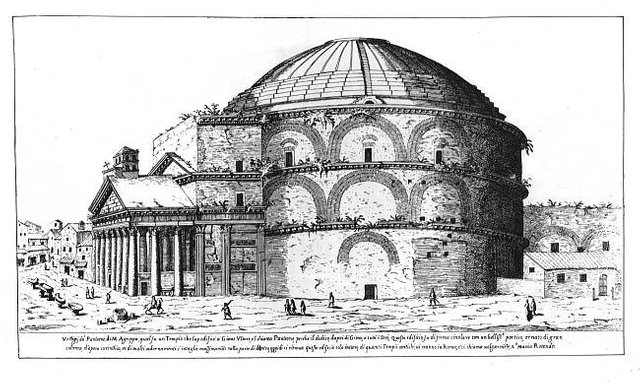
The direction of the shadow from causing issues. Judging from the light entrance to the Pantheon is not directed to the North.
But it does not comply with the direction.
The fact that Duparc painted from life confirms painting by Dutch artist Willem van Newland (1584-1635).
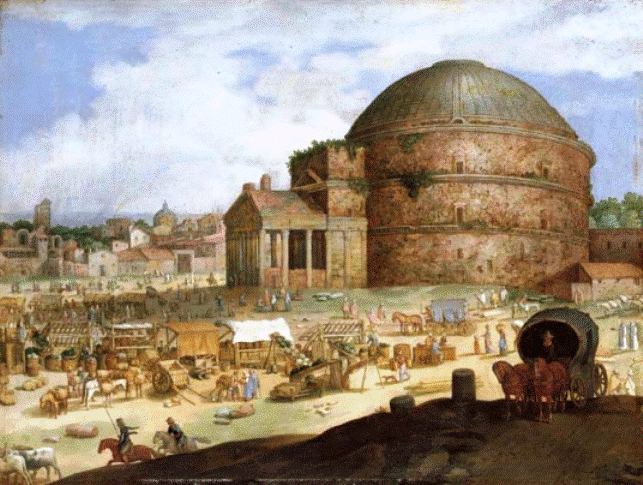
The artist has depicted the building in the middle of a large wasteland. In obviously poor condition. Hem colon the main entrance is in the ground.
It's not like that the Pantheon was used as a temple. Most likely it simply the people lived.
I found another image of the Roman Pantheon. And it is also wrong.
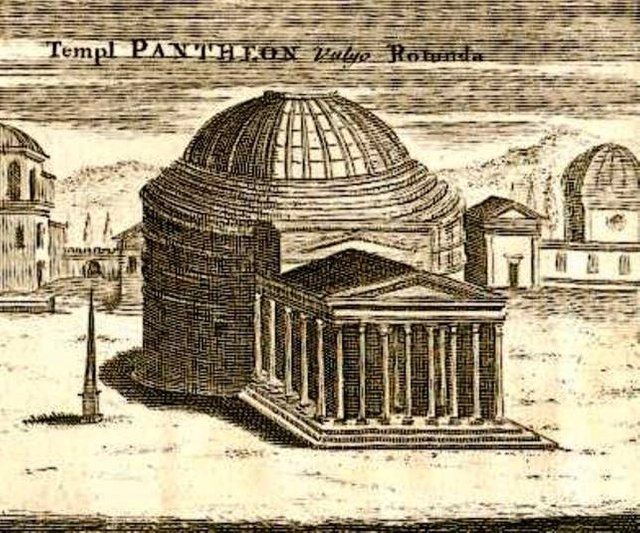
Judging from the short shadows, the time of apparent noon. So South it turns to the right of the entrance. Then entrance is on the West. How so?
Obelisk is already there and is in principle correct. Where you are now.
The painting by the Italian artist Bernardo Francesco Paulo Ernesto Bellotto (1721 — 1780), the Pantheon also seems a bit strange.
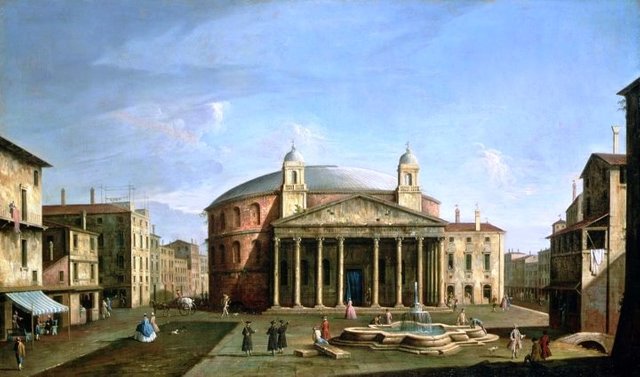
Again, the entrance is not exactly directed to the North. The building what is the offset proportion. Above the entrance there were two turrets. These turrets were installed in the 17th century. But Bellotto why they do not look like other paintings.
The obelisk is not, but the fountain in place. I have the feeling that artists of all time painted a different building.
Could not the same Italian artist not to see the Pantheon? Why is it so wrong drew?
But the Italian painter Ippolito Caffi (1809-1866) drew almost familiar Pantheon.
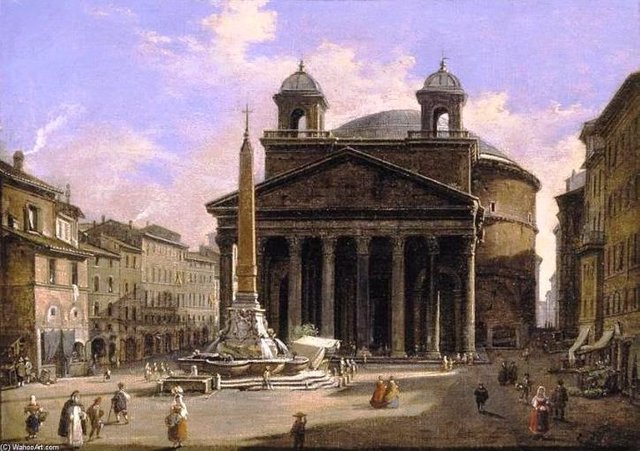
The entrance is clearly directed to the North. The obelisk on the place.
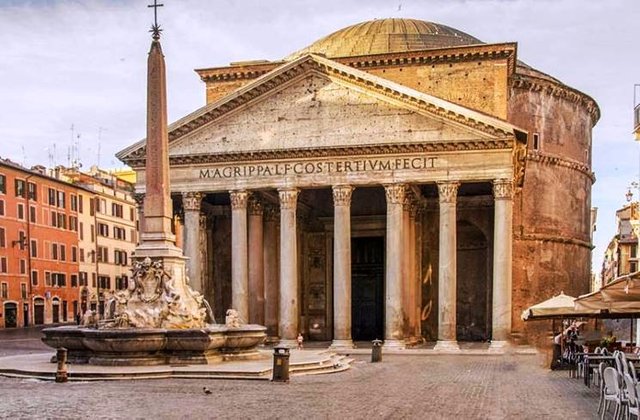
In 1883 the turret removed and the Pantheon got its modern look.
In this photo you can see the Pantheon with turrets.
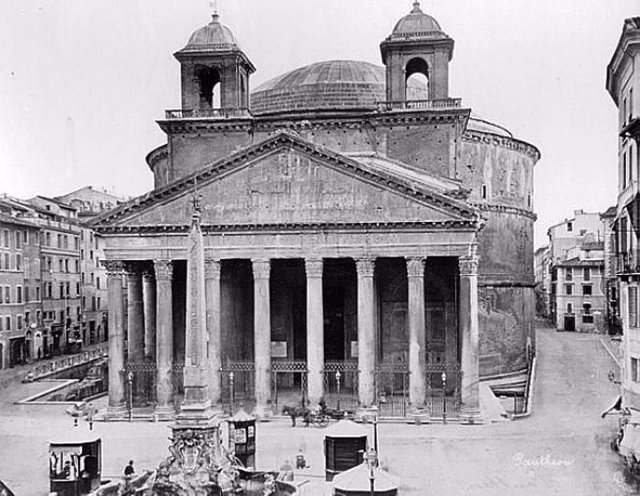
in this photo, no.
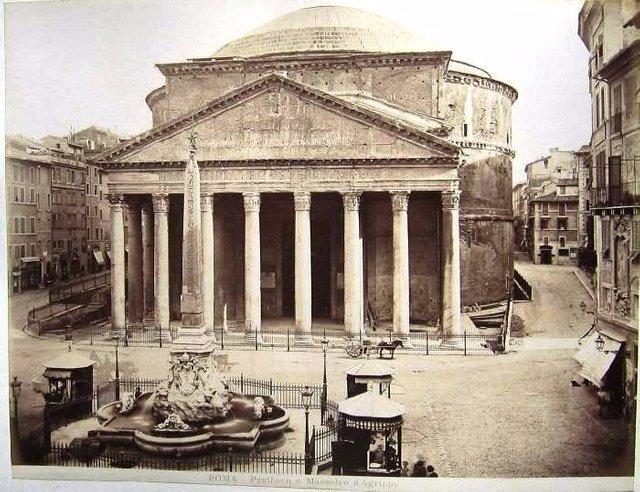
It seems the view of the Pantheon changed frequently, but for some reason there are no descriptions of these events.
Hello @gildar,
Congratulations! Your post has been chosen by the communities of SteemTrail as one of our top picks today.
Also, as a selection for being a top pick today, you have been awarded a TRAIL token for your participation on our innovative platform...STEEM.
Please visit SteemTrail to get instructions on how to claim your TRAIL token today.
If you wish to not receive comments from SteemTrail, please reply with "Stop" to opt out.
Happy TRAIL!
This post has been ranked within the top 10 most undervalued posts in the second half of Apr 10. We estimate that this post is undervalued by $1.76 as compared to a scenario in which every voter had an equal say.
See the full rankings and details in The Daily Tribune: Apr 10 - Part II. You can also read about some of our methodology, data analysis and technical details in our initial post.
If you are the author and would prefer not to receive these comments, simply reply "Stop" to this comment.
added to #history-trail - awesome post
Very interesting, with lots of information I didn't know, even though it's maybe my favorite building on the whole world. Have you noticed what happens when you are in the Panthenon when it rains? The rain enters through the hole in the roof, obviously, but when you're inside, you can just step to the side of the building, and the water disappears through holes in the floor that you would otherwise never have noticed.
It's amazing, I hope if you ever go there, you get to be there when it rains!